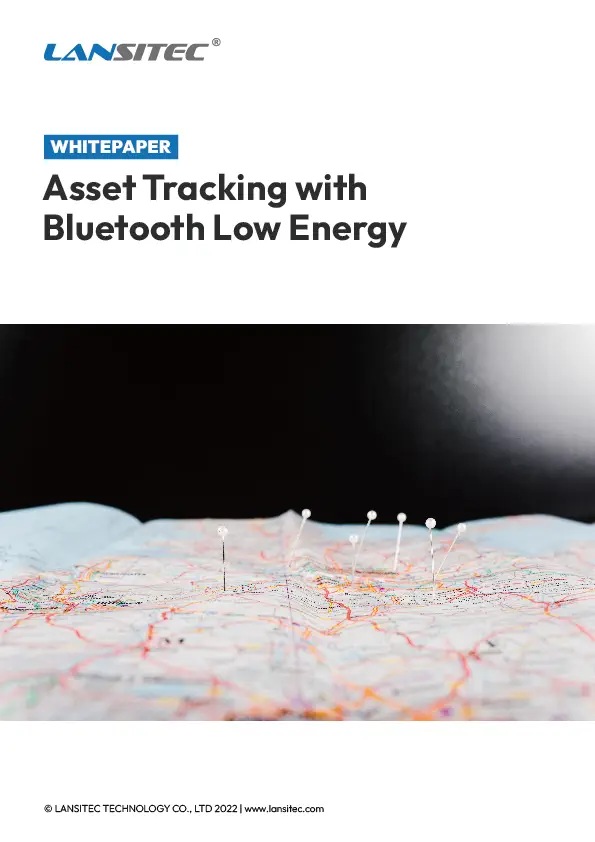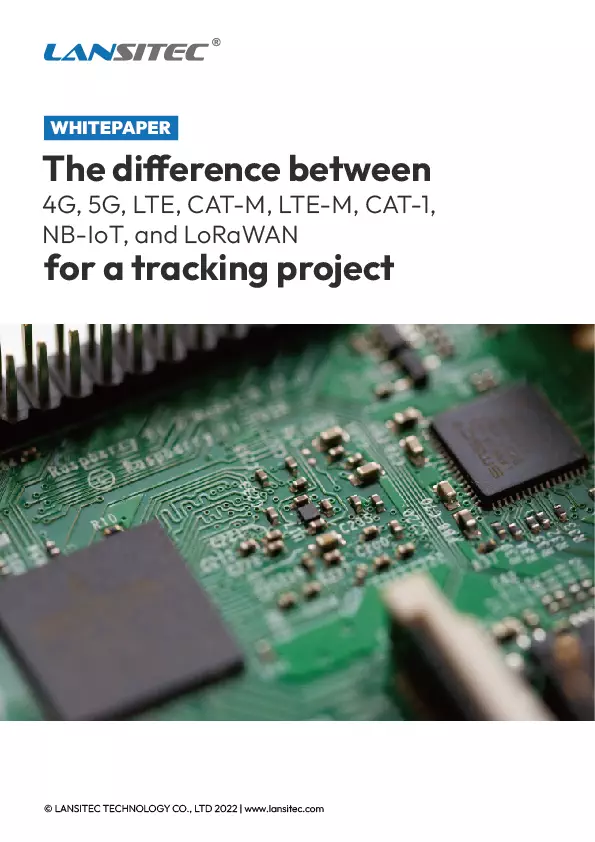A middle-sized university in the United States that wanted to stay anonymous needed a faster, more reliable way to track class attendance and ensure campus safety. Manual check-ins took too long and created data inaccuracies. The B006 Badge changed that. This Bluetooth beacon, worn like a standard ID, simplified every step. It broadcasted attendance data in real time, slashing manual record-keeping by an estimated 70% over one semester.
The solution combined the B006 Badge with a B-Mobile + LoRaWAN network. Small, fixed gateways captured the badge signals and transmitted them securely to a central server. The system provided near-instant insights into occupancy and movement. Security teams cut response times by 30%, thanks to real-time location data. The architecture remained secure, protecting student information at every step.
This case study tells the story of how a single beacon badge, paired with a powerful wireless backbone, boosted efficiency and safety across an entire campus.
The Problem & Background
The university in this case study spanned over fifteen buildings. Each building included multiple lecture halls, labs, and offices, servicing thousands of students and faculty every day. With such a large and dynamic population, the administration faced mounting challenges in keeping tabs on classroom occupancy and ensuring overall campus security.
To record attendance, professors relied on paper sign-in sheets or verbal roll calls. This simple process quickly became tedious and error-prone. Students would forget to sign in. Faculty would lose track of sign-up sheets. Administrators ended up with mismatched or incomplete data. At the same time, campus security teams had limited real-time information on student locations. In emergencies or unexpected events, they struggled to coordinate rapid responses.
Below are the key pain points:
Time-Consuming Attendance Checks – Professors often spent five to ten minutes of class time calling out names. This delay not only affected teaching schedules but also reduced actual instructional time per session.
Security Teams Lacking Real-Time Visibility – The campus stretched across multiple floors and buildings. Without a central system to map student movement, security personnel had to rely on fragmented information or manual spot checks.
Inaccurate Data on Classroom Occupancy – Spaces became overcrowded, leading to discomfort and distractions. Simultaneously, other rooms sat underused because administrators never saw true, up-to-date occupancy figures. Planning for future terms became guesswork rather than a data-driven process.
These frustrations led the university to seek a better way. They needed an automated attendance system that could handle large volumes of student movements without adding more manual tasks for faculty or staff. They also needed improved security insights. Most importantly, they wanted a solution that could be deployed with minimal disruption to daily operations.
The following sections describe how the B006 Badge and a B-Mobile + LoRaWAN architecture answered these challenges, providing both efficiency and security in one cohesive system.

B006 Badge Bluetooth Beacon
The beacon constantly advertises iBeacon information according to settings. It has a built-in 600mAh rechargeable battery (non-rechargeable 440mAh version is also available) with adjustable advertising interval. The maximum standby time is approximately 1 year.
Form Factor:
The badge measures 97×62×7 mm, roughly the size of a typical name badge. It slips easily into daily routines, so students wear it without fuss.
Key Features:
1-Year Battery Life: A built-in 600 mAh (or optional 440 mAh) battery powers the badge. Under recommended settings, it can last up to one year without recharging.
Adjustable Advertising Interval: Administrators can set the broadcast interval from as low as 100ms up to 5 seconds, balancing real-time tracking with energy efficiency.
150 m Bluetooth Coverage: The badge supports Bluetooth 5.0, offering a strong signal range—enough for large lecture halls or open campus areas.
iBeacon Protocol: The badge transmits a standard iBeacon format, making it easy to integrate with popular software platforms or custom campus systems.
Unique Advantages
- Long Standby: Students and staff rarely need to worry about charging. Maintenance teams can plan an annual battery refresh, saving huge time and labor.
- Wide Coverage: With up to 150 meters of Bluetooth range, the badge remains visible to gateways scattered across hallways, entrances, or outdoor courtyards. This coverage reduces the need for excessive infrastructure installations.
- Adjustable Interval: During class changes, the badge can broadcast more frequently, providing near real-time updates. In off-peak hours, it can slow down to conserve power.
At-a-Glance Specifications
Parameter
Details
Dimensions
97×62×7 mm
Battery Options
Li-ion (600 mAh) or CR2032 (440 mAh)
Battery Life
Up to 1 year at 0 dBm, 1 s interval
Bluetooth Protocol
Bluetooth 5.0 (iBeacon Support)
Coverage Range
Up to 150 m (line of sight)
Advertise Interval
100 ms to 5 s (configurable)
Operating Temperature
–10°C to +65°C
The badge’s slim design and robust battery capacity make it ideal for students who move between classes multiple times a day. It works reliably in large auditoriums, busy hallways, and even some outdoor areas. By pairing the B006 Badge with strategically placed gateways, the university lays the foundation for automated attendance tracking and real-time campus security.
Implementing a Complete Solution: B-Mobile + LoRaWAN
The B006 Badge does more than just broadcast a beacon signal. It integrates seamlessly into a larger ecosystem known as B-Mobile, which leverages LoRaWAN for wide-area, low-power connectivity. Here’s how it all fits together:
Why B-Mobile?
Designed for Mobile Beacons: Students and staff carry the B006 Badge everywhere they go. The badge continuously transmits its iBeacon signal as they move from lecture halls to labs.
Fixed Gateways: Bluetooth + LoRaWAN gateways sit at strategic points around campus—building entrances, hallways, and common areas. Each gateway listens for any nearby B006 Badge broadcasts.
This setup shifts the heavy lifting to a few well-placed gateways instead of relying on every badge to transmit data across long distances.
Why LoRaWAN?
Long-Range Coverage: A single LoRaWAN gateway can cover up to five kilometers in urban environments. That’s enough to handle sprawling university grounds.
Low Power, Cost-Effective: LoRaWAN requires far less power than cellular-based systems. Gateways also operate on unlicensed frequency bands, avoiding monthly cellular fees.
As a result, the university can set up its own secure LoRaWAN network, managing coverage in-house without recurring carrier costs.
Data Flow
- B006 Badge Broadcasts: Each badge sends out small iBeacon messages at set intervals (as low as 1 second or up to 5 seconds).
- Gateways Forward Data: The gateway’s Bluetooth receiver picks up the beacon signals. It then uses LoRaWAN to send that data to a central server.
- Real-Time Processing: The server software compiles the incoming signals. It updates attendance logs and shows live occupancy maps for security teams.
This end-to-end system ensures the university has an accurate, real-time view of student movements without manually taking roll calls.
Key Benefit: “LoRaWAN infrastructure ensures the university can centrally manage coverage without monthly cellular fees and reliably track thousands of badges simultaneously.”
Additionally, it supports a secure architecture, where student data is protected at every step—only essential beacon identifiers are passed through the LoRaWAN network, and final processing occurs in a controlled server environment.
Deployment & Integration
Rolling out the B006 Badge system didn’t happen overnight. The university used a phased approach that ensured both technical feasibility and user acceptance. Here’s how they did it:
Rollout Strategy
- Pilot Building First: The university chose a mid-sized lecture hall building to start. This smaller environment allowed IT teams to test how the badges performed during busy class transitions without overwhelming the system.
- Campus-Wide Expansion: After the pilot’s success, the team replicated the setup across all academic buildings, residence halls, and common areas. Data from the pilot helped them predict where to place gateways and how many were needed for optimal coverage.
This method prevented large-scale disruptions. It also gave administrators confidence in the system’s real-world performance before committing additional resources.
Configuration Choices
- Advertising Interval: During rush periods—such as right before classes—the B006 Badge broadcasted every one second. This offered near real-time tracking. In quieter hours, they shifted to a five-second interval to save battery.
- Gateway Placement: The IT department mapped high-traffic zones: building entrances, hallways, cafeterias, and campus security checkpoints. Each gateway could cover multiple floors or entry points, minimizing hardware costs.
Adjusting these parameters balanced responsiveness with power efficiency, ensuring badges would last the full academic year without frequent battery swaps.
User Onboarding
- Minimal Training: Students simply wore the badge like a standard ID. Once they entered a classroom, their presence got logged automatically.
Collaboration with Faculty: Professors provided the IT department with feedback on lecture schedules and classroom flow. This cooperation helped gateway placement align with real-world foot traffic.
Throughout deployment, the university’s IT team worked hand-in-hand with faculty. They scheduled installations during off-peak times. This cooperation minimized classroom interruptions and kept everyone informed about how the new system would enhance both teaching and security.
Results & Benefits
Introducing the B006 Badge on campus had an immediate impact. Faculty no longer spent ten minutes calling roll in each class. Security teams gained real-time insights into where students gathered. Administrators finally had data-driven tools to allocate rooms and resources effectively.
- Time Savings: Attendance check-ins dropped from roughly 10 minutes per class to 2 minutes or became entirely automated. This freed up over an hour of teaching time each week for some professors.
- Enhanced Security: Automatic occupancy alerts triggered when student counts exceeded set limits.
Incident response times improved by 30%, as security officers pinpointed students’ locations on a live map instead of relying on calls or manual headcounts. - Accurate Data & Analytics: Daily attendance accuracy rose by 90%, producing far more consistent enrollment and dropout statistics.
Historical movement patterns guided resource planning. The cafeteria could adjust staffing for rush hours. The library optimized study room bookings based on actual demand.
Metric Spotlight: “In the first semester, daily attendance accuracy rose by 90%, while the security team decreased overall response times by 30%.”

FIGURE 1: Key Results & Benefits (Infographic)
This simple infographic highlights the immediate improvements. Fewer manual tasks. Greater safety. Smarter campus-wide decisions. By combining accurate Bluetooth beacon data with real-time LoRaWAN updates, the university turned a once-unwieldy process into a streamlined, automated system that benefits students, faculty, and administrators alike.
Challenges & Lessons Learned
Large-scale deployments rarely come without obstacles. The university overcame several hurdles when rolling out the B006 Badge system across multiple buildings and varied student populations. These challenges, and the lessons learned from them, shaped the final success of the project.
Campus Layout Complexity
- Multi-Story Buildings and Basements: Signal propagation in tall structures can be unpredictable. Thick walls, metal doors, and underground labs all introduce potential dead zones. The IT team conducted extensive site surveys to measure signal strength at different locations and heights.
- Iterative Gateway Placement: Initial plans called for gateways primarily at building entrances and common areas. However, some lecture halls had unique architectural designs. The university had to install extra gateways or reposition existing ones for better coverage. In a few problem spots, they raised gateway antenna heights to overcome interference.
Key Takeaway: A precise, data-driven approach—where teams map coverage and run real-time tests—is vital. One-size-fits-all gateway placement rarely works in diverse or older campus buildings.
Privacy & Data Protection
- Transparency with Students: Early in the project, rumors circulated about “being tracked 24/7.” The administration held open Q&A sessions. They explained how the badges only broadcast their ID, and that personal data would remain encrypted or anonymized where possible.
- Limited Data Storage: The system recorded only necessary details: timestamp, beacon ID, and signal strength. Sensitive information, like student names, was linked in a secure database that only authorized personnel could access. This separation of identifiers from personal records helped calm privacy fears.
- Compliance & Guidelines: The university followed best practices similar to GDPR guidelines. Minimizing data retention and requiring explicit consent-built trust across campus.
Key Takeaway: Proactive communication and strong data governance reassure users. Sharing how data is collected, stored, and protected can transform skeptics into allies.
Battery Maintenance
- Year-Long Battery Life, But Not Forever: Each B006 Badge can last up to one year on a single charge or battery swap—an impressive span. Still, thousands of badges mean thousands of individual devices to track. Even a 1% failure rate could disrupt classes or skew data.
- Scheduled Inspections: The university set mid-year checks to gauge battery levels. They built a simple scanning tool that flagged badges with low battery signals. This allowed for targeted replacement rather than swapping every badge unnecessarily.
- Long-Term Sustainability: Managing annual or semi-annual battery replacements required planning and budget allocation. The university considered a recycling program for used batteries, making the process eco-friendlier.
Key Takeaway: While one year of battery life is excellent, large deployments need a robust plan to monitor and replace batteries on time—especially when consistent tracking is mission-critical.
Overall Lesson
“Early stakeholder engagement alleviated privacy concerns and fostered positive adoption among students and faculty.” By involving each campus group—IT staff, building managers, students, and professors—in solution design and deployment, the university created a sense of shared ownership. This collaborative mindset not only resolved technical snags more efficiently but also bolstered confidence in the new system.
Conclusion & Future Plans
The introduction of the B006 Badge fundamentally reimagined how this university manages attendance and campus security. By moving away from manual roll calls and siloed data, the university established a robust, connected ecosystem. The badge’s rugged construction, long battery life, and iBeacon broadcasts allowed it to run seamlessly in day-to-day operations, with minimal upkeep or additional costs.
Pairing the B006 Badge with a B-Mobile + LoRaWAN infrastructure amplified its benefits. Faculty saved time each class, security teams gained real-time campus overviews, and administrators accessed dependable occupancy analytics to make informed decisions about resource allocation. Students embraced the system too, once they saw how it simplified everyday tasks and offered tangible safety improvements.
Moving forward, the university plans to expand these capabilities into additional use cases:
- Event Tracking: Large-scale gatherings, such as orientation fairs or career expos, often lack robust attendee data. By reusing the same network of gateways, event organizers can monitor foot traffic, manage capacity, and dynamically adjust resources based on real-time badge detection.
- Library & Lab Check-Ins: The same badge system could automate access control for specialized areas, logging each student’s entry and exit for more accurate usage statistics. This helps administrators understand peak visitation times, allocate study spaces better, and improve student experiences.
- Emergency Notifications & Evacuation Drills: With real-time location data, security teams can send targeted alerts when an emergency arises—such as guiding people away from unsafe zones. During drills, they can evaluate evacuation compliance more accurately and refine procedures.
By continuing to build on this foundation, the university remains at the forefront of smart-campus technology. The B006 Badge and its underlying systems offer a scalable, future-ready solution that can adapt to evolving needs without requiring a complex overhaul.







